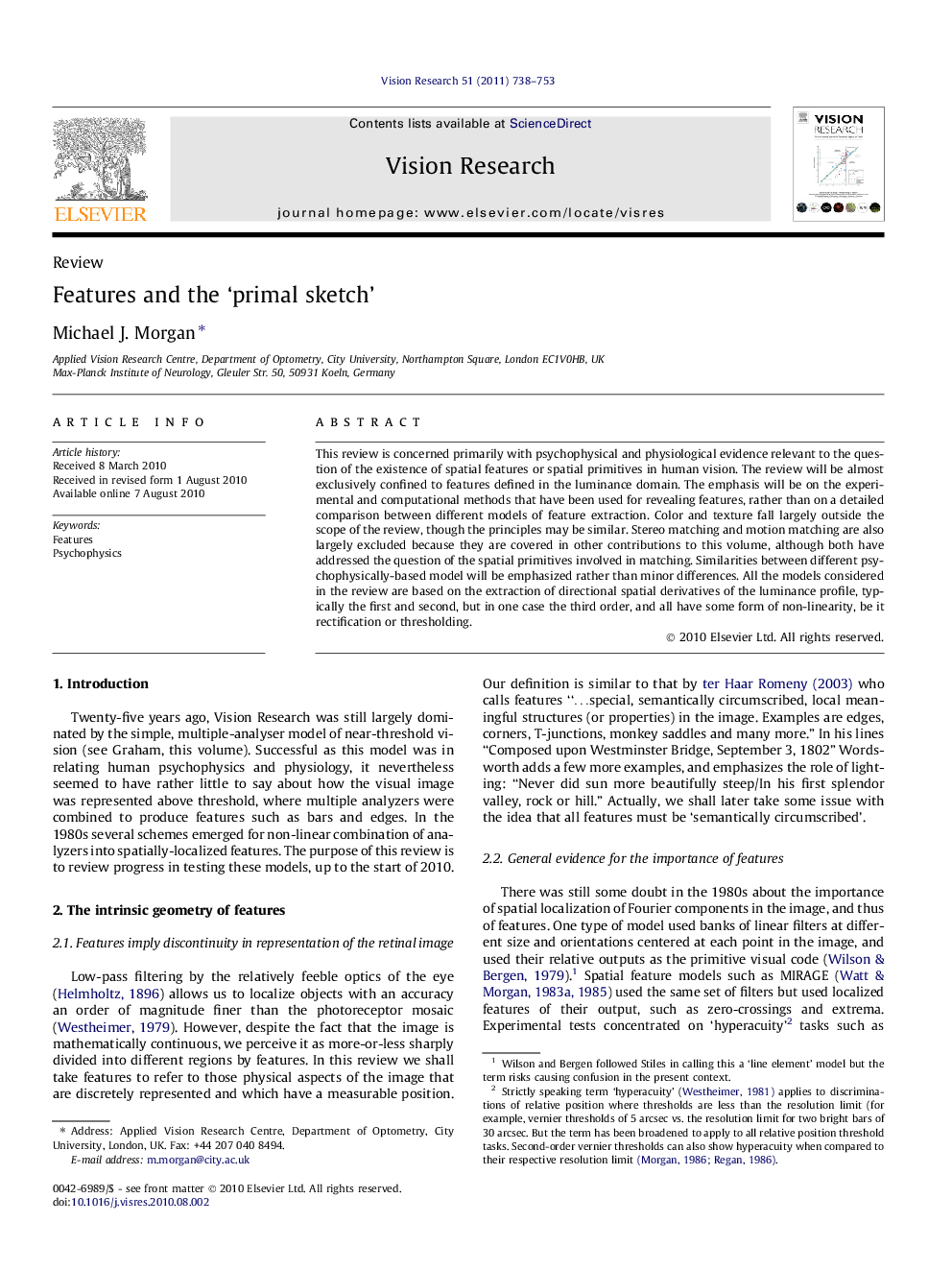| Article ID | Journal | Published Year | Pages | File Type |
|---|---|---|---|---|
| 4034177 | Vision Research | 2011 | 16 Pages |
This review is concerned primarily with psychophysical and physiological evidence relevant to the question of the existence of spatial features or spatial primitives in human vision. The review will be almost exclusively confined to features defined in the luminance domain. The emphasis will be on the experimental and computational methods that have been used for revealing features, rather than on a detailed comparison between different models of feature extraction. Color and texture fall largely outside the scope of the review, though the principles may be similar. Stereo matching and motion matching are also largely excluded because they are covered in other contributions to this volume, although both have addressed the question of the spatial primitives involved in matching. Similarities between different psychophysically-based model will be emphasized rather than minor differences. All the models considered in the review are based on the extraction of directional spatial derivatives of the luminance profile, typically the first and second, but in one case the third order, and all have some form of non-linearity, be it rectification or thresholding.
Research highlights► The retinal image is a continuous distribution of light over a surface, but must be given some form of symbolic description before it can serve as the basis for perception and action. ► Significant features of the retinal image are likely to be edges, ridges and summits/hollows, similar to the features of 3-D landscapes, which can be measured from local, directional spatial derivatives of the luminance landscape. ► Models based on psychophysical methodology have converged on the importance of multi-scale Gaussian filtering of the image and have proposed a variety of methods for combining information across scale.
